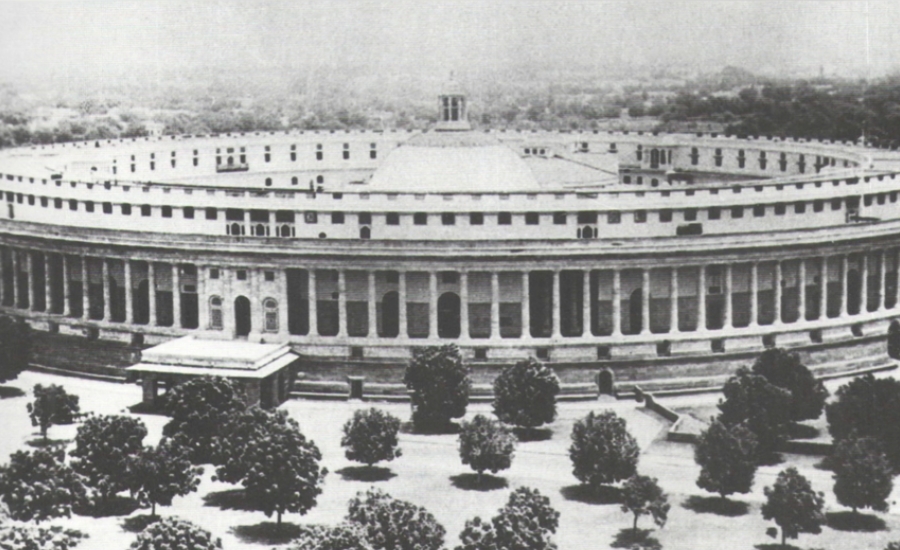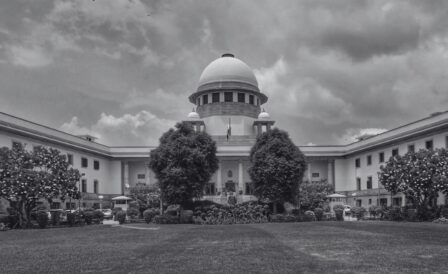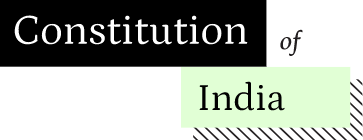
In a previous article, we traced the constitutional incorporation of the President’s power to refer issues to the Supreme Court of India for its opinion. In this article, we examine a specific and fascinating report that the Federal Court—the institutional predecessor of the Supreme Court of India— issued in 1944. This report was issued in response to the Governor-General’s exercise of the power to make references, as conferred under the Government of India Act, 1935. It presents an early account of the concerns relating to institutional powers and fairness that have been expressed regarding executive references to judicial authorities.
In In re Levy of Estate Duty, the Governor-General referred four questions to the Federal Court for its opinion under Section 213 of the Government of India Act. These questions were centered around which institution held the authority to “…provide for the levy of an estate duty in respect of property other than agricultural land, passing upon the death of any person.” In their majority opinion, Chief Justice Sir Patrick Spens and Justice Sir Srinivasa Varadachariar made a passing reference to the “…inexpediency (according to a certain school of thought) of the advisory jurisdiction,” and to the concern that the Federal Court’s opinion would have limited legal effect. Nevertheless, the majority deferred to Parliament’s decision to vest the Governor-General with the power to make such references. Consequently, they answered the questions referred to the Federal Court, while steering clear of engaging deeply with the substantive objections to the Governor-General’s power of reference.
By contrast, the concerns surrounding this power found decisive expression in Justice Zafrulla Khan’s dissenting opinion. He reviewed various critiques of the executive’s power to refer legal questions to the judiciary for opinion, as expressed in scholarship and judicial decisions in England, Canada, and the United States. The concerns that the judge discussed, which remain relevant to the President’s recent reference relating to law-making by state legislatures, included two key points:
First, the inconsistency of such references with the nature of judicial reasoning. Such references require courts to answer abstract, hypothetical questions. It was argued that this was contrary to the judicial task of applying legal principles to concrete facts, and shaping the principles in light of such facts. Without a concrete factual context, the courts’ responses to references risked being “…enveloped in a thick fog of hypotheses and uncertainties…” and relying “…upon a forest of assumptions…”, which would lead to their having no legal value.
Second, the problem of adverse anchoring. When judges provide advisory opinions in response to such references, they risk forming preconceptions about how a category of cases should be decided. This may lead to unconscious bias when adjudicating future cases, and a failure to appreciate the unique facts and complexities of those cases. It was argued that this was a particularly acute issue since future litigants, whose interests might be affected by such preconceptions, would often be unknown and thus remain unrepresented in the hearing of the advisory reference.
Justice Zafrulla Khan agreed with both these critiques. He concluded that a Governor-General’s reference under the Government of India Act could only be properly answered if it included all necessary material and precisely formulated questions. The judge found that the Governor-General’s vague and under-detailed reference regarding the ‘estate duty’ failed to satisfy these requirements. Accordingly, he declined to provide answers to the questions referred, with a caveat that attempting to do so would “…raise ghosts far more troublesome than any that it might serve to lay.”
In conclusion, Section 213 of the Government of India Act was the primary constitutional antecedent for the President of India’s power to seek the Supreme Court’s opinion. Yet, the question of whether the Governor-General—or later the President—should possess such power remained contested even after the Act’s passage, and while the Constitution of India was being framed. Notably, the substantive objections to this power were not debated in the Constituent Assembly, and find little mention in the available records of the Union Constitution Committee and the ad hoc Committee on the Supreme Court. Therefore, Justice Zafrulla Khan’s minority opinion in In re Levy of Estate Duty remains a crucial historical source where the arguments against this power have been articulated.
These arguments remain relevant to the President’s recent reference concerning law-making by state legislatures. The judgment in the State of Tamil Nadu case was delivered in a specific factual context, which involved the Governor’s (in)actions relating to certain Bills passed by the state legislature. In this light, the President’s reference raises certain critical questions: How can issues concerning the President’s and Governors’ powers with respect to such Bills be properly addressed in the abstract, without considering the relevant facts and political dynamics in which those powers are exercised? Which instances of the President’s or Governors’ (in)actions would be presented to and examined by the Court? How would the abstract answers that the Supreme Court has been asked to provide address, and affect judicial decision-making in, disputes that have not yet arisen?
These are amongst the challenges raised by the President’s recent reference, especially given the abstract nature of the legal issues that have been referred to the Court for consideration.
More blog posts

The Supreme Court’s Advisory Jurisdiction in Indian Constitutional History
21 May 2025 • By Saumya Singh
The President’s power to consult the Supreme Court was affirmed in a range of documents which preceded the Constitution of India's enactment.
